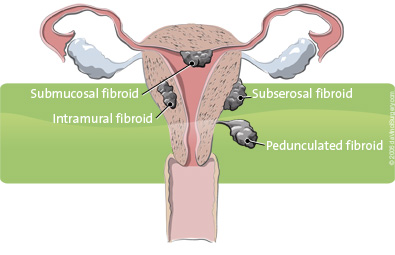Fibroids & Treatment Options
Uterine fibroids are benign (non-cancerous) tumors occurring in at least one quarter of all women. They can grow underneath the uterine lining, inside the uterine wall, or outside the uterus.
Many women don't feel any symptoms with uterine tumors or fibroids. But for others, these fibroids can cause excessive menstrual bleeding (also called menorrhagia), abnormal periods, uterine bleeding, pain, discomfort, frequent urination and infertility.
Treatments include uterine fibroid embolization – which shrinks the tumor – and surgery. Surgical treatment for uterine tumors most often involves the surgeon removing the entire uterus, via hysterectomy.
While hysterectomy is a proven way to resolve fibroids, it may not be the best surgical treatment for every woman. If, for example, you hope to later become pregnant, you may want to consider alternatives to hysterectomy like myomectomy. Myomectomy is a uterine-preserving procedure performed to remove uterine fibroids.

Types of Myomectomy
Each year, roughly 65,000 myomectomies are performed in the U.S. The conventional approach to myomectomy is open surgery, through a large abdominal incision. After cutting around and removing each uterine fibroid, the surgeon must carefully repair the uterine wall to minimize potential uterine bleeding, infection and scarring. Proper repair is also critical to reducing the risk of uterine rupture during future pregnancies. Menorrhagia is extensive menstrual bleeding.
While myomectomy is also performed laparoscopically, this approach can be challenging for the surgeon, and may compromise results compared to open surgery. Laparoscopic myomectomies often take longer than open abdominal myomectomies, and up to 28% are converted during surgery to an open abdominal incision.
A new category of minimally invasive myomectomy, da Vinci® Myomectomy, combines the best of open and laparoscopic surgery. With the assistance of the da Vinci Surgical System – the latest evolution in robotics technology – surgeons may remove uterine fibroids through small incisions with unmatched precision and control.